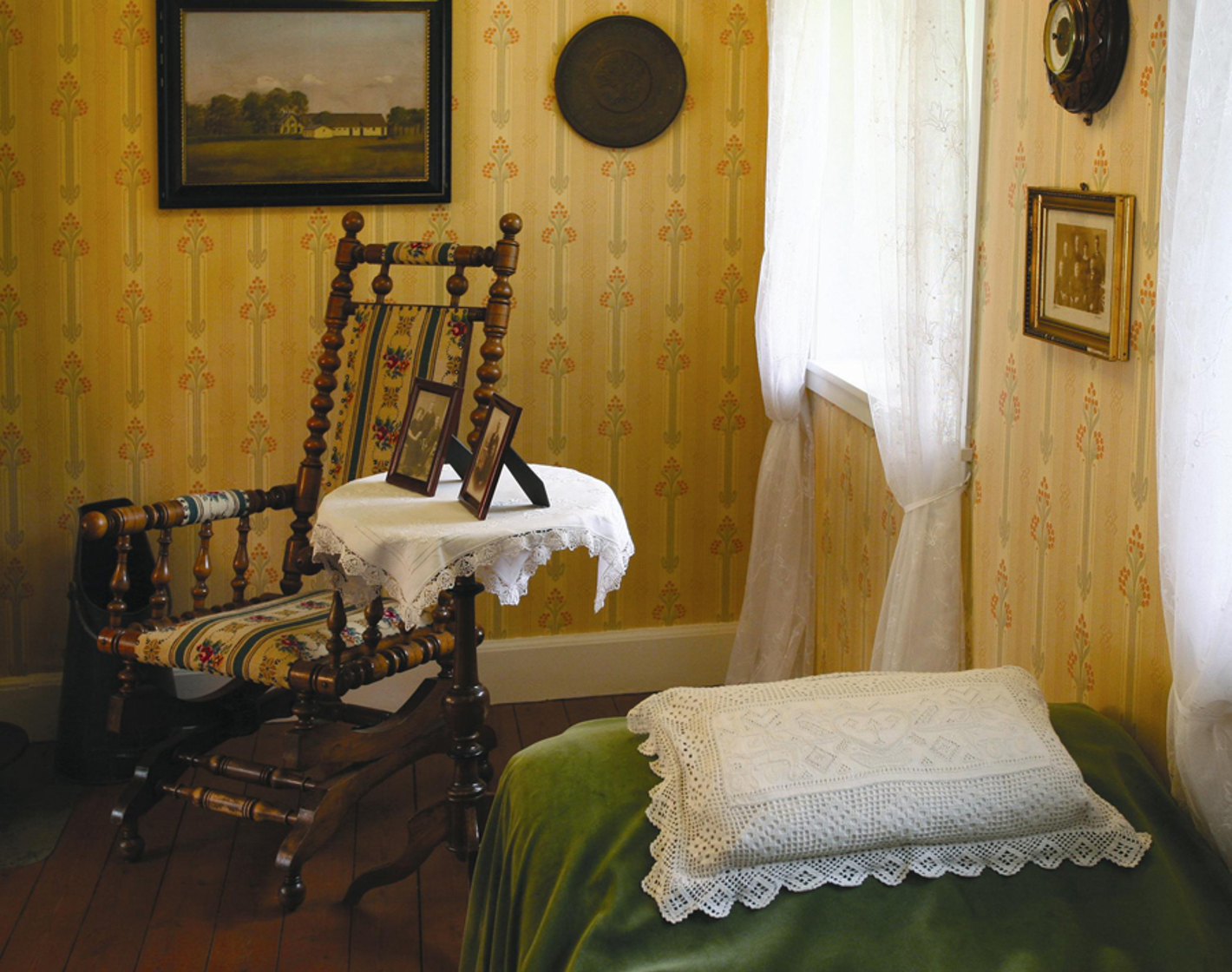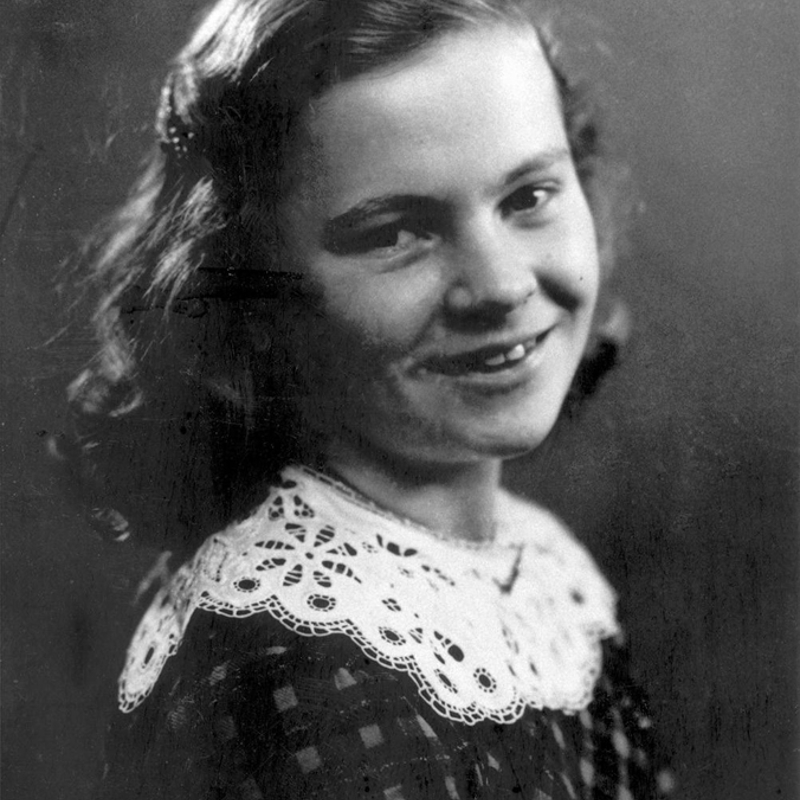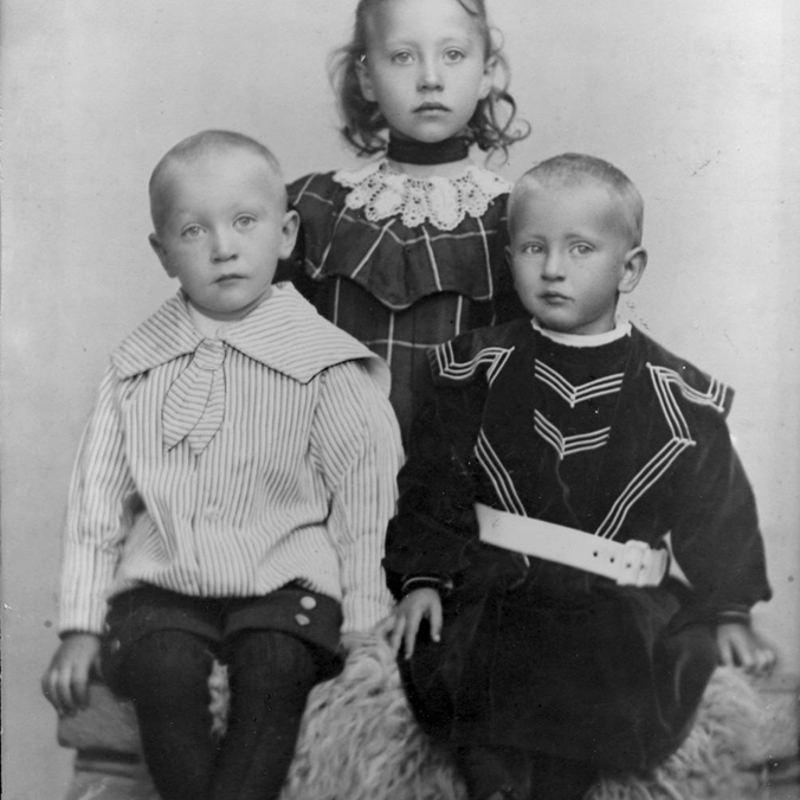Hedebo Embroidery in Generations
One of Denmark’s textile historians from the 20th century claimed that there was no greater embroidery activity anywhere else in the country than on the heath at Sealand. Whether this is true or not remains unclear. However, it is certain that Hedebo embroidery is a unique tradition, one that has led to the creation of these white textiles, preserved and altered by successive generations.

Daughters changed their mothers´ embroidery, even in the 19th century. The photo shows how a border of cut thread work and "hvidsøm" from a decorative towel has been edged with a newer crocheting, and made into a cushion used in the 1920 living room at Grevegaard.
Preservation
Pieces of Hedebo embroidery were passed down from one generation to the next. By the end of the 1870s, when the Danish Folk Museum declared Hedebo embroidery a national treasure, many beautiful examples of their female ancestors’ embroidery could be found in the peasants' farmhouses. The attention given to Hedebo embroidery between 1870 and 1920 likely strengthened the tendency to preserve these embroideries. IIn the middle of the 20th century, the Danish Popular Embroideries Society succeeded in locating and registering several hundred Hedebo embroideries from their many hiding places. The museums in the Hedebo area and in Copenhagen have many Hedebo embroideries in their collections, and continue to receive more. Today at least 25 local cultural history museums outside the Hedebo area have Hedebo embroideries in their collections.
Age of the embroideries
Hedebo embroidery is often dated based on the year included in the needle lace or by estimating its age through variations in composition. However, there is a question as to what these dates truly represent. A woman who, in her youth, learned one variation might have continued to use it even as new variations were introduced. Whole sections of a decorative towel could be replaced, making it so that only a trained eye could detect the renewal. A monogram and date might refer to a woman’s wedding day rather than the age of the embroidery. It’s possible that the bride replaced the old monogram and date with new ones. However, we do know that certain variations and compositions peaked in large numbers during specific periods, and that there is a chronological development in the variations of Hedebo embroidery.
Change
Analyses of individual textiles suggest that several women may have worked on the same piece of Hedebo embroidery, or that one woman worked on it over a period of several years. This theory arises from the mixture of highly advanced and more rudimentary techniques, stitches, and compositions found on some textiles. A woman might have 'modernized' her mother’s stitches without possessing the same experience and skill, or she may have completed a Hedebo embroidery after a long hiatus—an embroidery she had started when her eyes and hands still had the suppleness and calmness of youth. Several of the exhibited pieces consist of different qualities of linen, with later variations patched onto older sections. Other examples clearly show how an old collar can be added to, with new needle lace in buttonhole stitches, or a new border of ”Baldyring” net.

Bente Larsen født 1933 på Grevegård, ses her med en krave med udklipshedebo syet af hendes oldemor Birthe Nielsdatter (1840-1917), der drev Grevegård fra 1866 - 1899 sammen med sin mand.

Laura Ingeborg Larsen, født 1896 på Grevegård, ses her med en hedebokrave, der antageligt er syet af hendes mormor Birthe Nielsdatter (1840-1917).